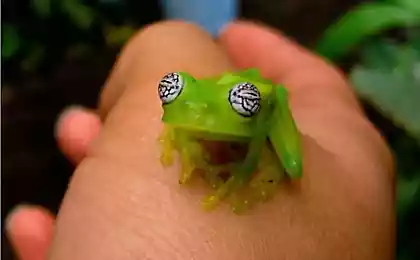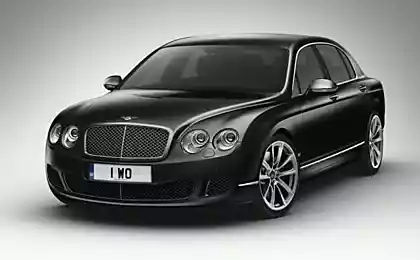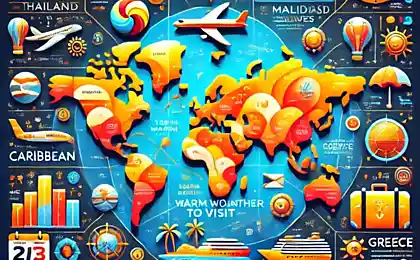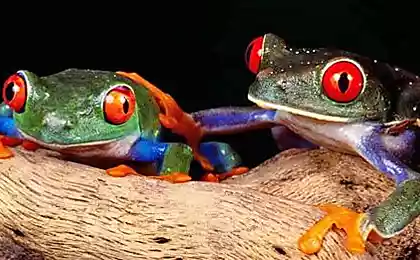733
A new round of evolution. Flying frog Wallace
From school we know that millions of years ago on Earth lived different lizards-dinosaurs. Among them were not just crawling and floating, but a small part of flying. Despite the fact that flying-types was enough, they were United by one common membranous limb-wings. Even long before the advent of feathers, these animals could surf airspace.
The end of the dinosaurs sad. After the ice age they all died out. As terrestrial giants, and lords of the wind. Next came a series of smaller animals, and the sky began to control birds.

It would seem that where much more improved — better not birds, but nature continues his experiments again and again sends in the flight initially, not flying creatures. The saying "born to crawl — can not fly" nature does not know. So on light there was a frog Rhacophorus Nigropalmatus, or as they are called Flying frog Wallace's (Wallace's Flying Frog).

These frogs, found in 1879 in the jungles of Malaysia and Borneo, Alfred Russel Wallace (Alfred Russel Wallace) they live only in the trees. They descend to the ground only for mating and laying of eggs.
Webbed paws allow the frogs to move through the air from branch to branch, overcoming distances of 20 meters!
Source: /users/413
The end of the dinosaurs sad. After the ice age they all died out. As terrestrial giants, and lords of the wind. Next came a series of smaller animals, and the sky began to control birds.

It would seem that where much more improved — better not birds, but nature continues his experiments again and again sends in the flight initially, not flying creatures. The saying "born to crawl — can not fly" nature does not know. So on light there was a frog Rhacophorus Nigropalmatus, or as they are called Flying frog Wallace's (Wallace's Flying Frog).

These frogs, found in 1879 in the jungles of Malaysia and Borneo, Alfred Russel Wallace (Alfred Russel Wallace) they live only in the trees. They descend to the ground only for mating and laying of eggs.
Webbed paws allow the frogs to move through the air from branch to branch, overcoming distances of 20 meters!
Source: /users/413























